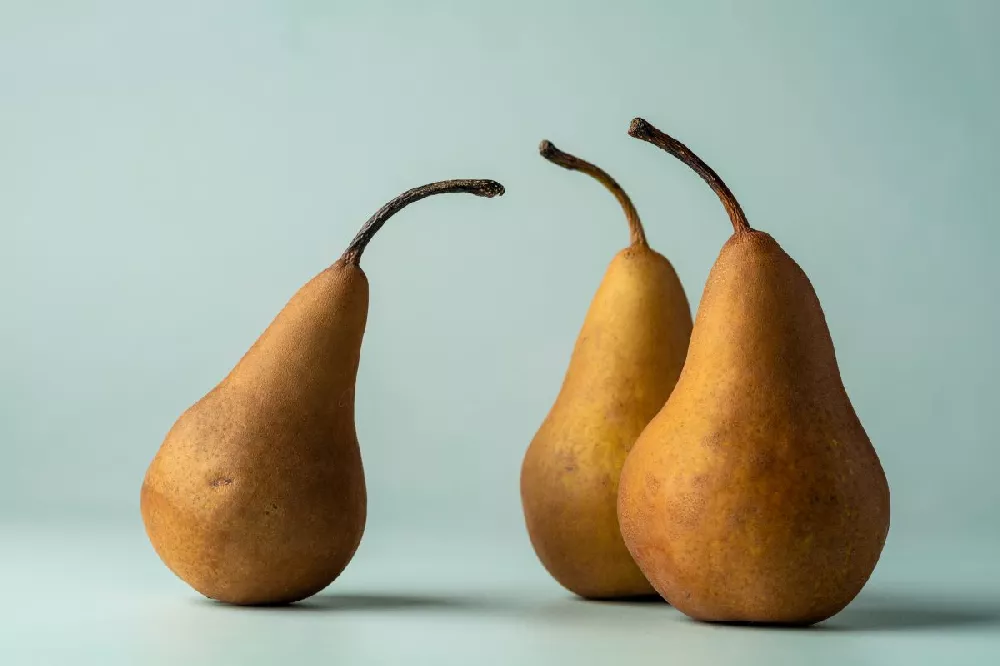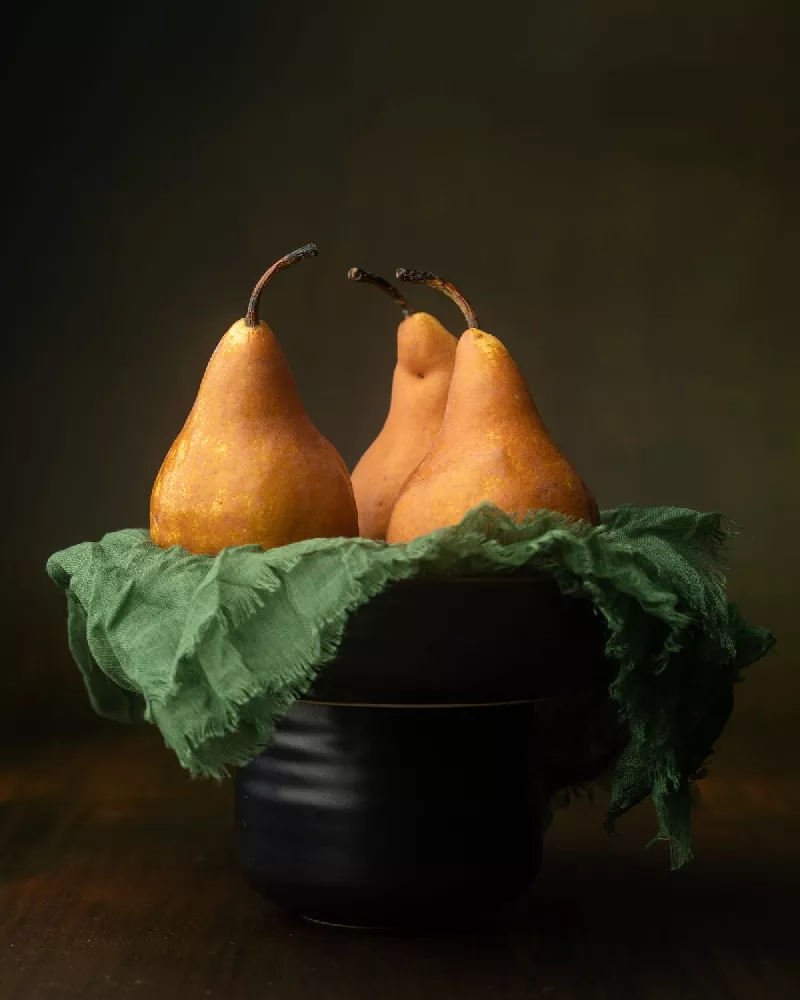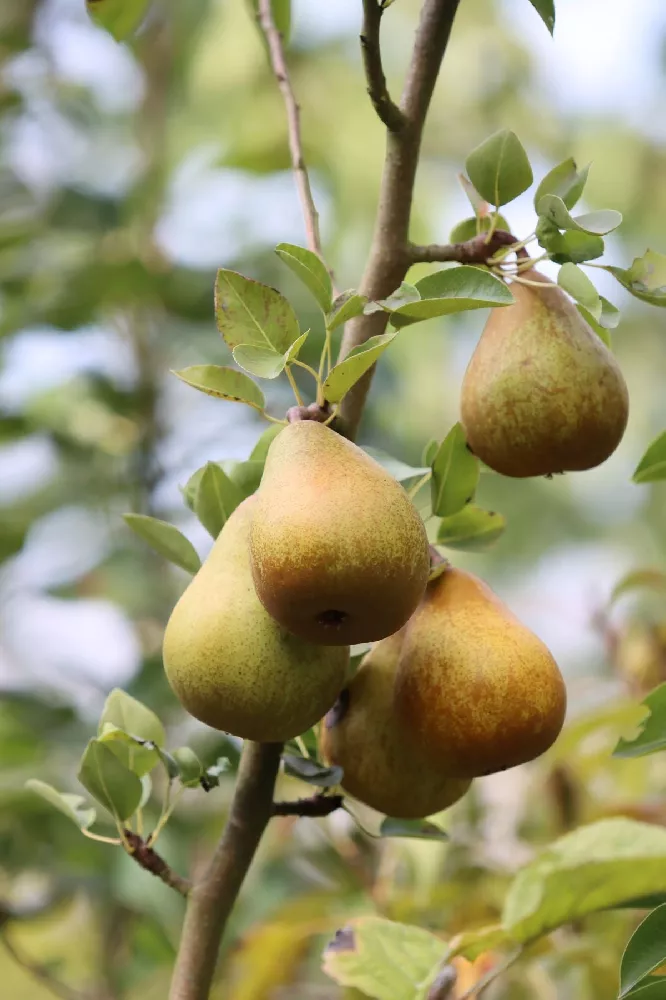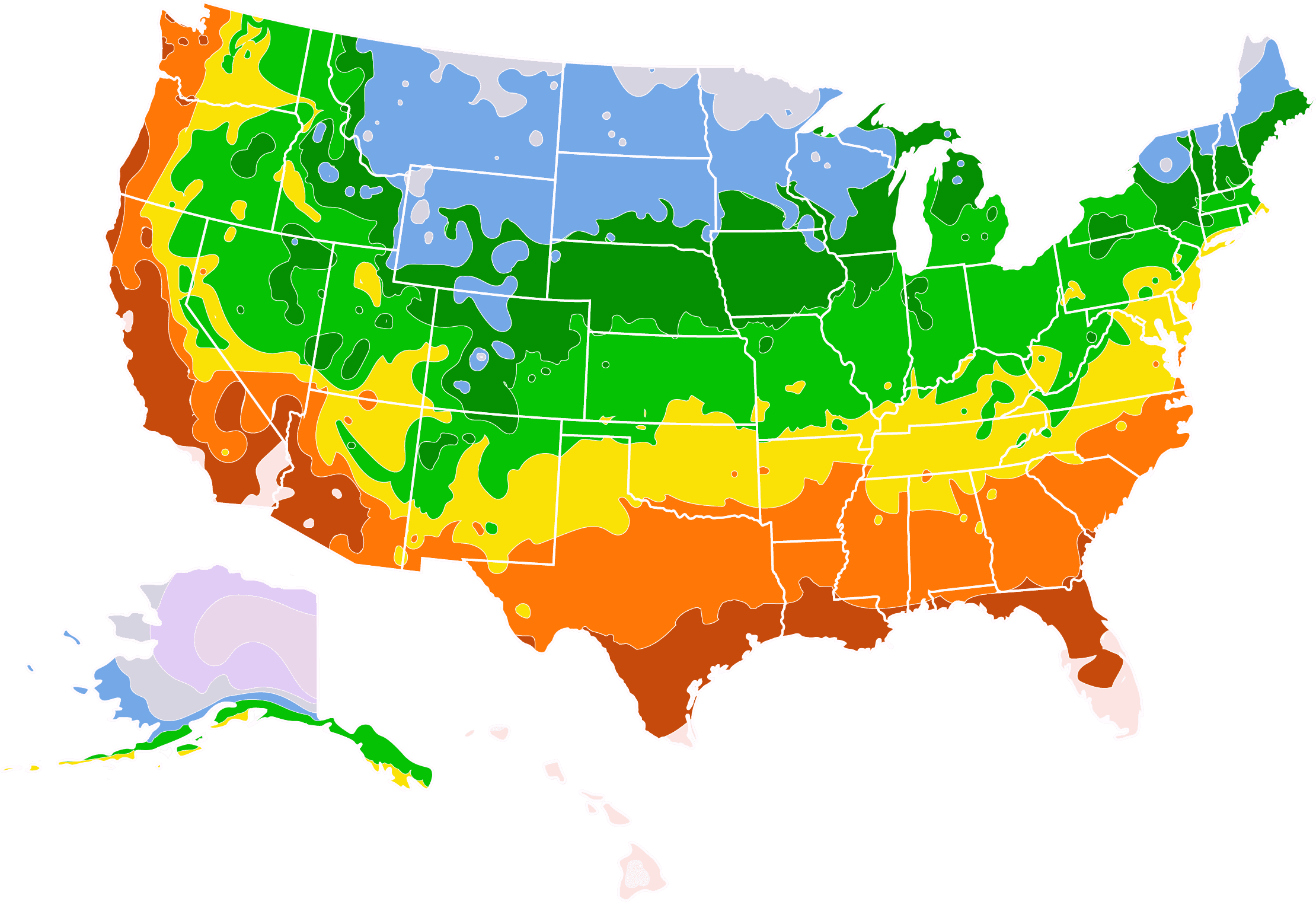- Home >
- Edible Plants >
- Bosc Pear Tree
Bosc Pear Tree for Sale - Buying & Growing Guide
Among the many types of fruit grown in North America, The Bosc pear, Pyrus communis 'Bosc,' could be considered royalty. The large, juicy fruit of this attractive tree is sweet and tender, and a healthy Bosc pear tree will continue producing long after other types of pear have shut down for the winter. The fruit is excellent for eating right off the tree but also excels when used for cooking and canning. The tree is not difficult to grow or finicky about conditions and needs less upkeep than most other types of fruit. In the spring, your tree will be covered with fragrant white flowers, and in the summer, its softly rounded, dense canopy makes it a good shade tree. Here are a few other reasons to add a Bosc pear to your garden:
- Each fruit is quite large, with a golden-yellow, thin skin.
- When stored properly, the fruit will last for two to three months.
- Its fall foliage is red and yellow, and in winter, the pleasingly twisted limbs provide texture against snowy landscapes.
Enter your zip code to find nearby stores that may carry this plant.
Plant Care
Sunlight

Bosc pear trees do best in full sun, with at least six to eight hours of direct light a day.
Watering
Bosc pears need 1 to 2 inches of water a week, either from rain or supplemental watering.
Fertilizing

Fertilize in spring with a balanced, slow-release product designed for fruit trees.
Planting instructions
Site your Bosc pear where it will get six or more hours of sunlight a day, in soil that drains well. Unpot your sapling, and tease out any encircling roots. Place it in a bucket of water for an hour or two while you’re preparing the site. Dig a hole that’s as deep as the root ball and two to three times as wide. Place the sapling in the hole, spreading out the roots. Fill in around them with topsoil that has been mixed with well-rotted compost or manure, tamping down as you go to eliminate air pockets. Water thoroughly. Apply a 2- to 3-inch layer of organic mulch, such as bark chips, around the root zone, but keep it away from the trunk to avoid rot.
Watering and nutrients
Water a newly-planted pear tree every few days until you start to see new growth on the branches. Then cut back to once-a-week watering for the first year. A mature Bosc pear needs an inch of water roughly every 10 days, so if you do not receive rainfall, give it some supplemental watering. If you’ve planted your tree in fertile soil, you can hold off on fertilizing until the tree begins to bear fruit, which may take several years. At that time, start fertilizing in spring after bud break with a product designed for fruit trees.
Pollination
Bosc pears are not self-fertile. The flowers need to receive pollen from another similar tree in order for fruit to form. Some pollinators that work well with Bosc pears include D’Anjou pear trees, Comice pear trees, and Bartlett pear trees. Plant the pollinating trees within 50 feet of the Bosc tree so that insects such as bees, wasps, and moths, can travel from one tree to another.
Pruning
Prune dead, diseased, or damaged branches out of your Bosc pear tree whenever you see them. In early spring, do maintenance pruning after the tree’s first year. At that time, prune your tree so that there is one strong central leader (branch) with five or six lateral branches coming off of it. Make your cuts just above a bud that is growing outward. Prune out branches that have a narrow, V-shaped crotch in relation to the central leader — you want to encourage branches with a wide angle that are closer to being parallel to the ground. You should also prune some of the fruit off heavily fruiting branches, removing one or two of the pears to lighten up the weight on the branch.
Pests and diseases
Insect pests that may appear on your pear tree include scale insects, leafrollers, and aphids. Horticultural oil can be used to tame infestations. You may also want to consider releasing predatory insects such as lacewings and ladybugs, which eat aphids and other pests. The most common disease of the pear tree is fire blight. If your tree’s leaves and smaller branches look dried up and as if they had been too close to a fire, that may be the cause. Cut back infected branches 4 inches below the diseased section, disinfecting your clippers between cuts with a bleach-water solution.
Harvesting
Bosc pears can be harvested in early- to mid-fall. A ripe pear will have a light cinnamon brown color and be firm to the touch. Bosc pears do not get soft when ripe, but will have some “give” if you press near the stem. A ripe pear will also detach more easily from the branch. The best way to determine ripeness, though, is to pick one and taste it — a ripe pear will be sweet and juicy.
Achieving maximum results
Although a mature Bosc pear tree may reach a height of 15 feet, you can constrain the height and width through judicious pruning. It is, in fact, not difficult to grow a pear tree in a large container, where the size will be determined by the size and shape of the pot it’s growing in and probably will not exceed 6 to 8 feet. Choose a container with good drainage that is at least twice the size of the root ball. You may need to repot the tree, freshening the soil when you do, every few years. Also, keep in mind that a container-grown plant will need more water and more regular feeding than one grown in the ground.
FAQs
Where does the Bosc pear tree grow best?
Will a Bosc pear tree fit in well in my garden?
Most people grow Bosc pears for the fruit, but the tree could just as easily be grown for its general appeal. It has lovely, dark green leaves and a full canopy. It would work well as a specimen plant, perhaps with a pollinator nearby, or as a foundation planting. It would be a perfect addition to a cottage garden, standing on its own with shade-loving perennials or mixed greens underneath.
How is the fruit of a Bosc pear best used?
Bosc pears are great for fresh eating, but they are also great for cooking. There is no better pear if you have a recipe that calls for poaching, since the firm flesh holds up well when cooked. They can be used for jams and compotes, and they make an excellent chutney. They are a good choice for main dishes that call for a fruit element, and they can be used to make great pear butter.
You can't add more Product Name - Product size to the cart.
OK


